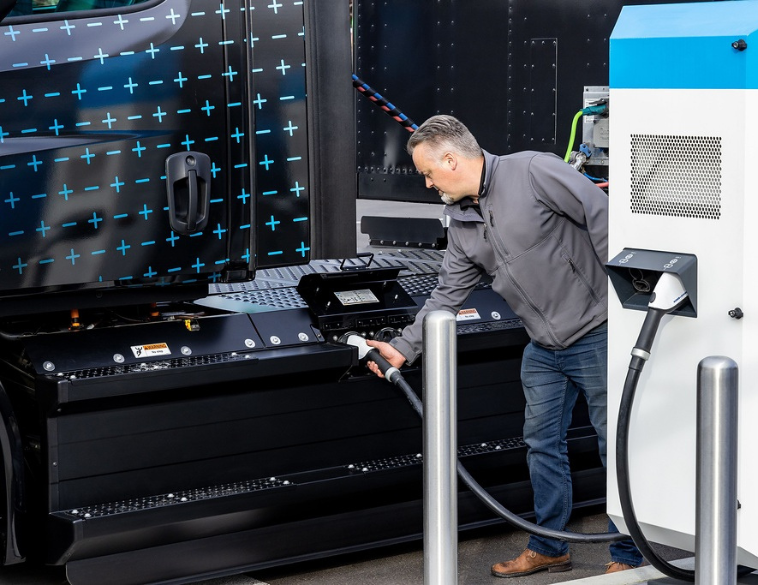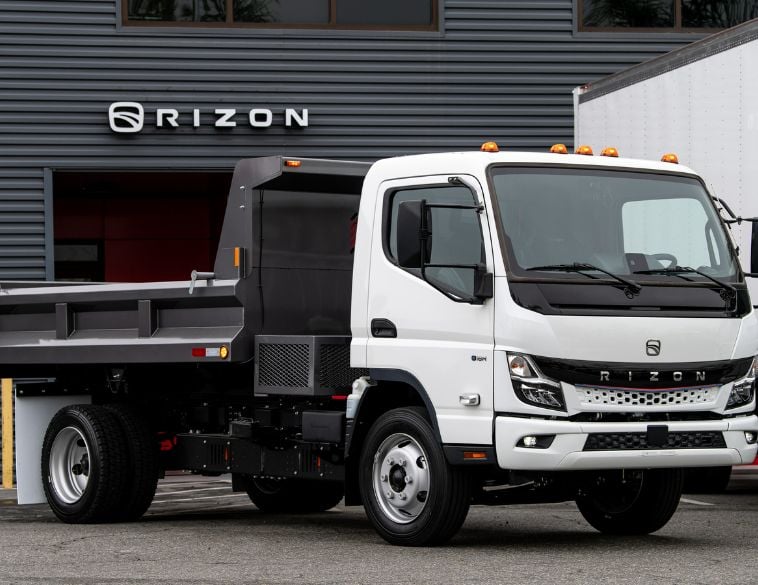Charging equipment, operations, costs, and telematics are all key considerations.
One of the hottest topics in the fleet management industry at present is vehicle electrification, and within that realm, medium and heavy-duty vehicles are garnering the spotlight as fleets look for ways to try and provide an electrified solution for the future.
A big question, is, can it be done practically? Plus, what is required and how long will it take to achieve?
Infrastructure and challenges
To find out, NC State and NAFA hosted a webinar entitled Medium Duty and Heavy-Duty Charging Infrastructure and Challenges (part of its series of its Sustainable Fleet Technology webinar series).
Hosted by Rick Sapienza, Director, Professional Services at Viatech, it featured Paul Stith, Associate Vice President, Global Transport Initiatives for global construction engineering firm Black & Veatch, and Jeremy Baksh, Project Director for eTransEnergy, a subsidiary of Duke Energy, which provides end-to-end EV solutions for fleet operators.
The webinar covered four distinct aspects of charging infrastructure, namely:
- EV Charging Equipment
- Facility Electrical Structure
- Utility Service Infrastructure
- Distributed Energy Resources
Electric Vehicle Supply Equipment (EVSE) is a huge part of the battery-electric vehicle eco-system and how it is procured, installed, and operated is essential to battery-electric vehicle use.
Nascent technology
As Jeremy Baksh noted, at present, it is also a very nascent technology with a lot of questions surrounding effective procurement and use, as well as future potential. Baksh explained that presently, it can be tempting for fleet owners and managers to look at EVSE from simply a cost standpoint, and like with many embryonic technologies or concepts, there are a lot of different providers trying to establish their presence in this field, making it a difficult one to navigate.
As a result, it can be easy for fleets to simply look at obtaining the lowest-cost equipment, but as Baksh explained this can be disastrous. For example, by going for the lowest cost EVSE, you might end up with a whole assortment of different equipment, from different providers that aren’t very compatible, plus you could quickly reach capacity limits when it comes to the ability to charge your vehicles.
Fleet managers are traditionally very good at analyzing all parameters of a vehicle in determining whether it fits their requirements and according to Baksh, the same strategy should apply when it comes to EV charging infrastructure.
Yet before even considering purchasing EVSE, fleets also need to have a long hard look at where they plan to be in the future, such as five years, 10 years, and even further down the road.
Available capacity
Paul Stith explained that when it comes to power and energy considerations, fleets need to look at what capacity is available to grow and expand their EV infrastructure, including the ability to add greater capacity, more charging units, and upgrading aspects such as switchgear and transformers.
This becomes particularly important when the fleet in question operates a variety of vehicles, including a sizeable number of medium and heavy-duty trucks.
These different types of vehicles have different charging requirements, so installing level 2 chargers designed for delivery vans such as the Ford E-Transit or General Motors’ BrightDrop 600, cannot be used for heavy-duty truck tractors and trailers, since typical Level 2 EVSE isn’t adequate to support their battery capacity and operation.
There’s also the question of how vehicles within the fleet will be used and their frequency of operation. For larger vehicles that carry more payload, more energy storage is required. Jeremy Baksh also noted that fleets need to consider the operating environment, including factors such as terrain, weather conditions, and distance travelled.
He explained that even with current DC fast-charging technology, fleets can be faced with very significant dwell times, which hampers vehicle operations, reducing efficiency and increasing costs.
Megawatt charging
In order to make a valid, practical case for battery-electric medium and heavy-duty vehicle use, many fleets will need to look at megawatt charging, yet the costs and ability to install this type of infrastructure can be very daunting and difficult.
In many cases, it will require bringing new electrical service into the depot or facility, since in most cases, the current electrical infrastructure simply isn’t adequate for powering a whole fleet of medium and heavy-duty electric vehicles.
“You need to be thoughtful about the cost to integrate your existing building into that new electrical power,” said Paul Stith. He noted that “Re-powering the building,” i.e., feeding it with an additional megawatt or two of power can be very expensive.
Therefore, he said, many fleets might consider having different charging services on-site, since this can be more effective at accommodating different types of vehicles, as well as more cost-efficient, particularly when it comes to EV programs that do not support building loads.
Space considerations
There’s also the question of space available to install EVSE, including energy storage requirements. Solar panels, for example often require a lot of space, so fleet managers need to ask themselves whether their existing facilities have room to install them, and, depending on where they are located, how effective solar generation will be. Fleets shouldn’t rule out the possibility of using traditional power sources, such as diesel generators (particularly in the short term) since they can provide a reliable and consistent energy source.
Jeremy Baksh noted that if fleets are seriously looking at making the investment into battery electric vehicles, not only will they have to consider a gradual introduction and integration of EVs into their existing fleets, but they will also need to have a roadmap laid out for on-site energy storage and generation, as well as looking at other factors such as demand charges and utility tariff rates, as well as relationships with local electricity providers.
Charge management
Charge management is a huge consideration for fleets when it comes to EVs. This includes understanding the actual energy their vehicles are using in operation, as well as when fleet operators can, and when they should be charging those vehicles. Baksh talked about the concept of “interoperability,” which not only factors in the physical charging infrastructure but also charging management, in tandem with fleet telematics systems.
“If you have a telematics system that sends telemetry data when those vehicles are out on the road, you want to be able to integrate that into your system and have software tools that talk to each other effectively,” said Baksh.
By doing so, fleet managers and operators can be provided with actionable information. Baksh notes that today, this concept can often be underestimated, yet it will be critical to successful EV integration into fleet operational practices. “You’ve got to plan for how battery electric vehicles integrate into your telematics system, along with the charge management strategy you’re going to be relying on.”
EV adoption for commercial fleets is a very big and complex issue, one that extends far beyond the vehicles themselves. By taking a long hard look at their operations and projections for the future, including costs and efficiencies, fleet managers can gain insight into real-world considerations for adopting EVs. These include near and long-term projections—for everything from charging infrastructure—to vehicle use and operating environment, facility requirements/upgrades as well as tariffs and other costs. This in turn will enable them to decide what strategy is best for their needs when it comes to EVs.



